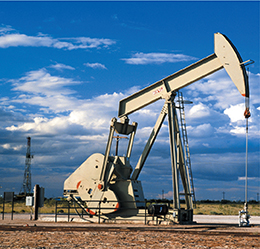15.3 Energy Resources
Reading Focus
Key Concepts
 What are the major nonrenewable and renewable sources of energy?
What are the major nonrenewable and renewable sources of energy? How can energy resources be conserved?
How can energy resources be conserved?
Vocabulary
nonrenewable energy resources
fossil fuels
renewable energy resources
hydroelectric energy
solar energy
geothermal energy
biomass energy
energy conservation
Reading Strategy
Identifying Main Ideas Copy the table below. As you read, write the main idea for each heading.
Heading |
Main Idea |
|---|---|
Nonrenewable energy resources |
a. |
Renewable energy resources |
b. |
Conserving energy resources |
c. |
Figure 16 Crude oil is pumped out of the ground or ocean floor. It is then refined and turned into gasoline, fuel oil, and other oil products.

From the alarm clock that wakes you up each morning to the light that you turn off before you sleep, you depend on energy resources to operate many different devices to get you through each day. Energy resources can be classified as either renewable or nonrenewable.
Nonrenewable Energy Resources
Nonrenewable energy resources exist in limited quantities and, once used, cannot be replaced except over the course of millions of years.  Nonrenewable energy resources include oil, natural gas, coal, and uranium. Such resources are currently being used much faster than they can be replaced, creating concern about how long they will last.
Nonrenewable energy resources include oil, natural gas, coal, and uranium. Such resources are currently being used much faster than they can be replaced, creating concern about how long they will last.
Oil, natural gas, and coal are known as fossil fuels because they were formed underground from the remains of once-living organisms. Currently, fossil fuels account for the great majority of the world's energy use. These fuels are not distributed evenly throughout the world. For example, about 60 percent of known oil supplies are located in a small area in the Middle East. The United States has just 2 percent of the world's oil supplies but about 25 percent of the world's coal supplies. Fossil fuels are relatively inexpensive and are usually readily available, but their use creates pollution.






